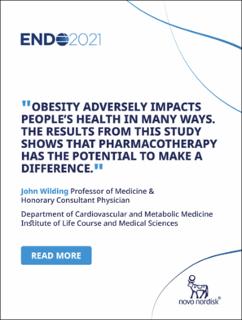| dc.contributor.author | Berge, Jarle | |
| dc.contributor.author | Hjelmesæth, Jøran | |
| dc.contributor.author | Hertel, Jens Kristoffer | |
| dc.contributor.author | Gjevestad, Espen Svendsen | |
| dc.contributor.author | Småstuen, Milada Cvancarova | |
| dc.contributor.author | Johnson, Line Kristin | |
| dc.contributor.author | Martins, Catia | |
| dc.contributor.author | Andersen, Eivind | |
| dc.contributor.author | Helgerud, Jan | |
| dc.contributor.author | Støren, Øyvind | |
| dc.date.accessioned | 2021-04-19T06:23:11Z | |
| dc.date.available | 2021-04-19T06:23:11Z | |
| dc.date.created | 2021-02-01T11:45:42Z | |
| dc.date.issued | 2021 | |
| dc.identifier.citation | Obesity. 2021, 29 (2), 359-369. | en_US |
| dc.identifier.issn | 1930-7381 | |
| dc.identifier.uri | https://hdl.handle.net/11250/2738218 | |
| dc.description.abstract | Objective This study aimed to compare the effects of two aerobic exercise programs of different intensities on energy expenditure. Methods This was a single‐center randomized controlled trial of patients with severe obesity allocated to a 24‐week moderate‐intensity continuous training (MICT) program or a combined MICT with high‐intensity interval training (HIIT/MICT) program. The primary outcome was energy expenditure during exercise (EEDE). Secondary outcomes included resting metabolic rate, cardiorespiratory fitness, and body composition. Results A total of 82 (56% females) patients were screened, and 71 (55% females) patients were allocated to HIIT/MICT (n = 37) or MICT (n = 34). Per‐protocol analysis showed that EEDE increased by 10% (95% CI: 3%‐17%) in the HIIT/MICT group (n = 16) and 7.5% (95% CI: 4%‐10%) in the MICT group (n = 24), with no differences between groups. In the 8‐ to 16‐ week per‐protocol analysis, the HIIT/MICT group had a significantly larger increase in EEDE compared with the MICT group. Resting metabolic rate remained unchanged in both groups. HIIT/MICT and MICT were associated with significant weight loss of 5 kg and 2 kg, respectively. Conclusions Patients completing a 24‐week combined HIIT/MICT program did not achieve a higher EEDE compared with those who completed a 24‐week MICT program. The HIIT/MICT group experienced, on average, a 3‐kg‐larger weight loss than the MICT group. | en_US |
| dc.language.iso | eng | en_US |
| dc.publisher | Wiley Periodicals LLC on behalf of The Obesity Society (TOS). | en_US |
| dc.rights | Attribution-NonCommercial-NoDerivatives 4.0 Internasjonal | * |
| dc.rights.uri | http://creativecommons.org/licenses/by-nc-nd/4.0/deed.no | * |
| dc.title | Effect of Aerobic Exercise Intensity on Energy Expenditure and Weight Loss in Severe Obesity-A Randomized Controlled Trial | en_US |
| dc.type | Peer reviewed | en_US |
| dc.type | Journal article | en_US |
| dc.description.version | publishedVersion | en_US |
| dc.source.pagenumber | 359-369 | en_US |
| dc.source.volume | 29 | en_US |
| dc.source.journal | Obesity | en_US |
| dc.source.issue | 2 | en_US |
| dc.identifier.doi | 10.1002/oby.23078 | |
| dc.identifier.cristin | 1884921 | |
| dc.description.localcode | This is an open access article under the terms of the Creative Commons Attribution‐NonCommercial‐NoDerivs License, which permits use and distribution in any medium, provided the original work is properly cited, the use is non‐commercial and no modifications or adaptations are made. | en_US |
| cristin.ispublished | true | |
| cristin.fulltext | original | |
| cristin.qualitycode | 1 | |

